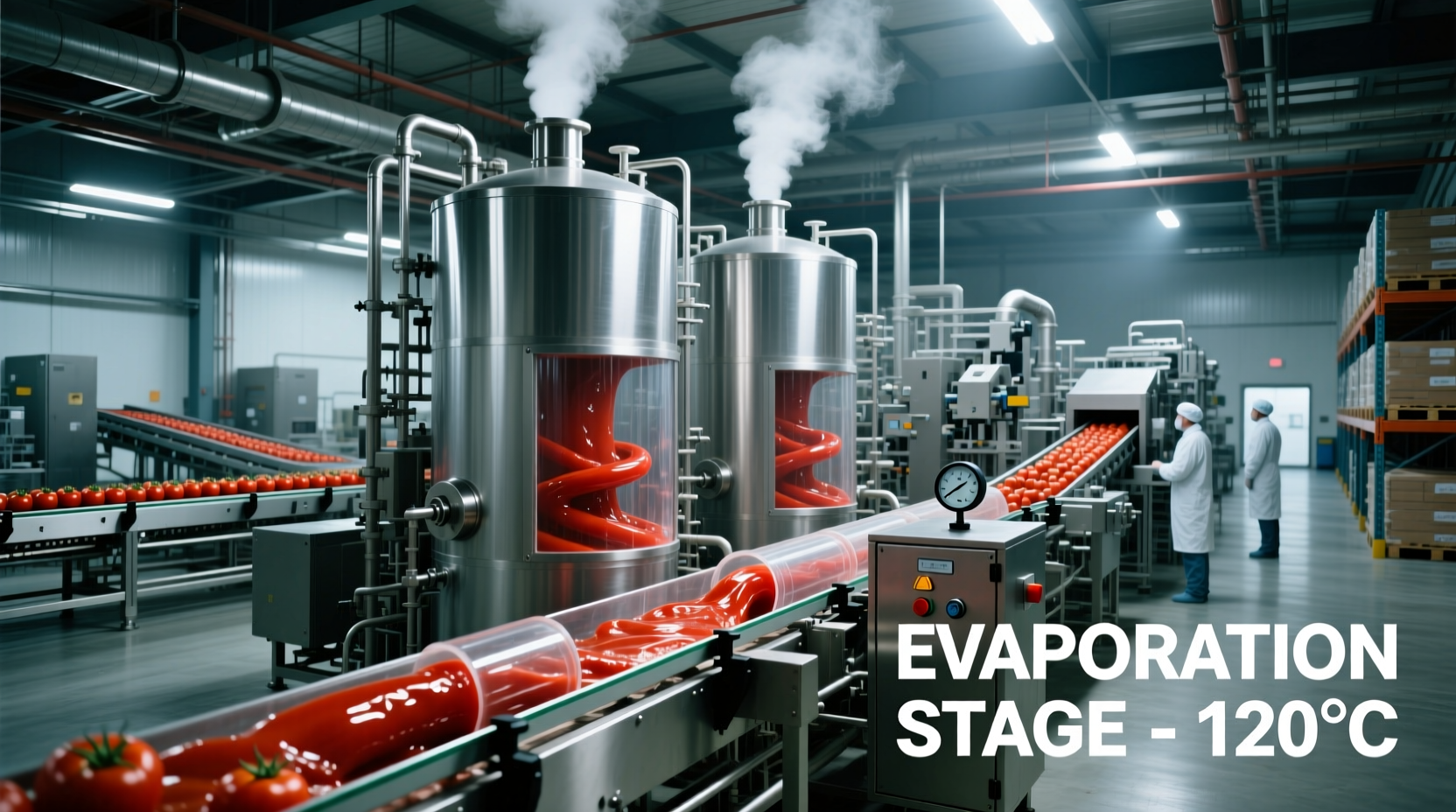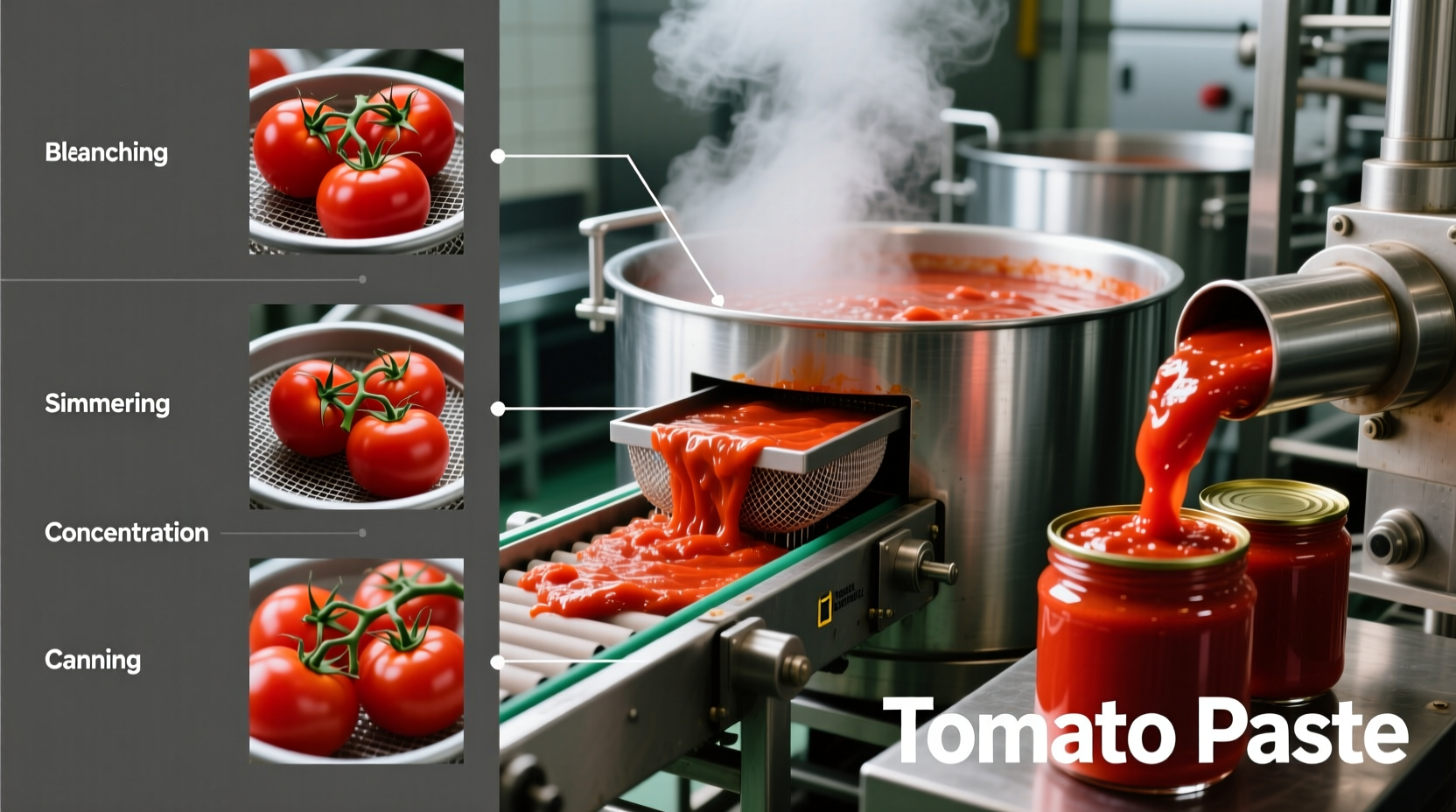Ever wonder what transforms fresh tomatoes into that rich, concentrated paste in your pantry? Understanding how tomato paste is made gives home cooks valuable insight into flavor development, quality selection, and optimal usage in recipes. This comprehensive guide breaks down the entire production process from field to can, revealing what happens behind the scenes and how it affects your cooking results.
From Field to Factory: The Tomato Paste Production Journey
Commercial tomato paste production begins long before tomatoes reach the processing facility. Specialized paste tomato varieties like Roma, San Marzano, and Amish Paste are cultivated specifically for their thick flesh, low moisture content, and high solids concentration. These varieties typically contain 5-6% more solids than standard table tomatoes, making them ideal for paste production.
Harvest timing is critical—tomatoes must reach peak ripeness with a Brix level (sugar concentration) of 4.5-5.5 before mechanical harvesting. According to the USDA Agricultural Research Service, harvesting at optimal maturity ensures proper color development and flavor compounds necessary for high-quality paste.
Step-by-Step Commercial Production Process
The industrial production of tomato paste follows a precise sequence designed to maximize flavor while ensuring food safety:
- Sorting and Washing: Fresh tomatoes pass through optical sorters that remove unripe, damaged, or contaminated fruit using color and shape recognition technology
- Crushing and Pulping: Tomatoes are heated to 60-65°C (140-149°F) and passed through pulping machines that separate seeds and skins from the juice and flesh
- Concentration: The tomato juice undergoes vacuum evaporation at low temperatures (55-65°C) to preserve flavor compounds while removing water—this step concentrates the solids from 5-7% to 24-30%
- Sterilization: The concentrated paste is flash-heated to 90-95°C (194-203°F) for 30-60 seconds to destroy enzymes and microorganisms
- Cooling and Packaging: Paste is rapidly cooled and packaged in aseptic containers or cans lined with food-grade enamel
| Production Stage | Temperature Range | Duration | Solids Concentration |
|---|---|---|---|
| Initial Pulping | 60-65°C (140-149°F) | 5-10 minutes | 5-7% |
| Vacuum Evaporation | 55-65°C (131-149°F) | 30-60 minutes | 18-24% |
| Final Concentration | 55-65°C (131-149°F) | 20-40 minutes | 24-30% |
| Sterilization | 90-95°C (194-203°F) | 30-60 seconds | 24-30% |
Why Vacuum Evaporation Matters for Flavor
Unlike traditional open-kettle cooking methods, modern facilities use vacuum evaporation technology that lowers the boiling point of water. This gentle concentration process preserves volatile flavor compounds and lycopene (the antioxidant responsible for tomatoes' red color) that would otherwise degrade at higher temperatures. Research from the University of California, Davis Department of Food Science & Technology confirms that vacuum processing maintains up to 20% more lycopene compared to conventional boiling methods.

Quality Indicators You Should Know
Not all tomato paste delivers the same culinary performance. Understanding production methods helps you identify quality markers:
- Brix Level: Higher quality pastes maintain 24-30° Brix (solids concentration). Lower quality products may contain added thickeners
- Color Consistency: Premium paste shows deep, uniform red color without brown spots indicating oxidation
- Ingredient List: Authentic tomato paste contains only tomatoes and sometimes citric acid for pH adjustment—avoid products with added sugar, salt, or preservatives
- Texture: Should spread smoothly without graininess, indicating proper straining during production
Homemade vs. Commercial Tomato Paste: Practical Comparison
While you can make tomato paste at home by simmering tomatoes for hours, the results differ significantly from commercial products:
- Commercial paste undergoes precise concentration to standardized solids content (24-30%), while homemade versions vary widely in consistency
- Industrial vacuum evaporation preserves more flavor compounds than home stovetop reduction
- Commercial facilities use specialized equipment to remove nearly all seeds and skins, creating smoother texture
- Commercial products have consistent pH levels (4.0-4.3) for safety, while homemade versions may require added acid
For most cooking applications, commercial tomato paste delivers more reliable results. However, homemade versions work well for small-batch specialty uses when you control all ingredients.
Maximizing Tomato Paste in Your Cooking
Understanding how tomato paste is made reveals why certain cooking techniques work best:
- Dry Sautéing: Cook paste in oil for 2-3 minutes before adding liquids to deepen flavor through caramelization—this technique develops compounds created during industrial concentration
- Storage Wisdom: Once opened, commercial paste lasts 5-7 days refrigerated. For longer storage, freeze in tablespoon portions—the aseptic processing allows for safe freezing without texture degradation
- Substitution Knowledge: When substituting tomato sauce for paste, remember commercial paste has 3-4 times more concentrated solids, so adjust liquid content accordingly











 浙公网安备
33010002000092号
浙公网安备
33010002000092号 浙B2-20120091-4
浙B2-20120091-4